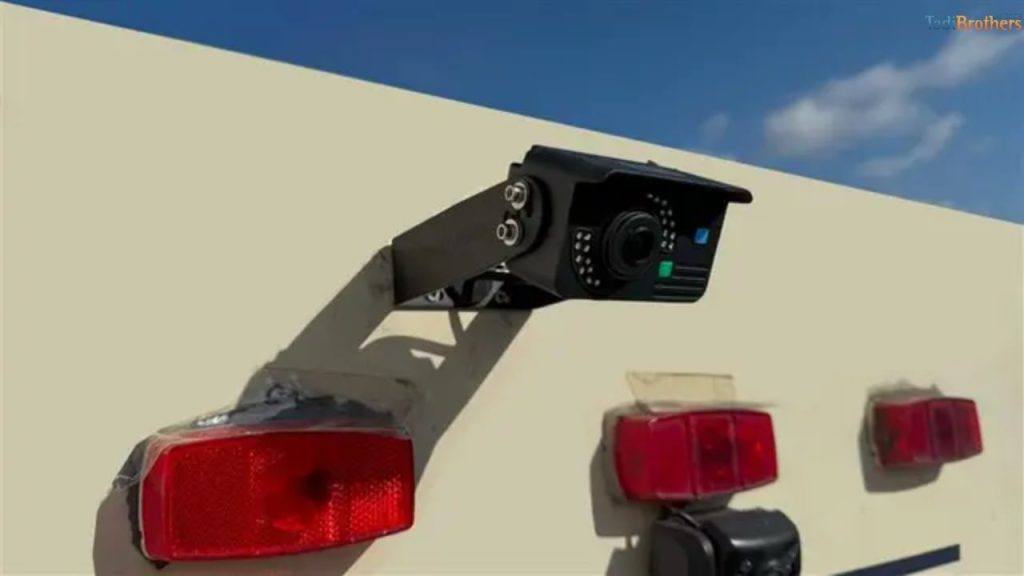Backup cameras are now a legally required safety feature in all new cars sold or manufactured in the United States. They help drivers see behind the vehicle and prevent tragic back-over accidents.
This article breaks down the backup camera law, explaining when it began, why it matters, and where you can get a reliable backup camera, including modern digital backup camera options for safer driving.
What ‘s the Federal Backup Camera Law?

The National Highway Traffic Safety Administration (NHTSA) made backup cameras mandatory starting May 1, 2018. The law covers most light vehicles, including cars, SUVs, vans, and small trucks. You should know that every new vehicle that weighs under 10,000 pounds must include a compliant rear visibility system.
This regulation is part of the Federal Motor Vehicle Safety Standard No. 111 (FMVSS No. 111). Its goal is to give drivers a clear view of the area behind their vehicles and reduce accidents involving children, pedestrians, and other objects.
In short:
- The law/mandate makes backup cameras legally required.
- FMVSS No. 111, issued by the NHTSA, provides the technical framework and compliance standards that manufacturers must follow to meet that law.
Key Requirements Under FMVSS No. 111
Here are some of the key requirements of each backup camera system. The backup cameras must meet specific safety standards to ensure reliable performance. Here are the main requirements:
- Field of View: The camera must show a 20-foot zone behind the car and five feet on each side.
- Fast Response: The image must appear within two seconds after shifting into reverse.
- Automatic Activation: The system must turn on automatically when the driver puts the car in reverse.
- Image Clarity: The display must remain clear and visible during both day and night.
- Durability: The system must work in different weather and lighting conditions.
These standards ensure consistent rear visibility for all drivers and vehicles.
Why Backup Cameras Became Mandatory
Before this rule, back-over crashes caused hundreds of deaths and thousands of injuries each year. NHTSA data estimated around 183 fatalities and 18,000 injuries annually due to reversing accidents. Children and older adults, who were not visible from the driver’s seat, made up the majority of the victims.
These backup cameras have dramatically reduced these numbers. By giving drivers real-time visibility, helping avoid tragedies that once seemed unavoidable.
ALSO READ: Are Backup Cameras Mandatory in 2025? Here’s What You Need to Know
The Impact of Backup Camera Laws

Since the rule took effect, crash data has improved. Studies by the Insurance Institute for Highway Safety (IIHS) found that vehicles with backup cameras experience fewer reversing crashes. Pairing cameras with sensors or cross-traffic alerts enhances the benefit.
These backup camera systems also make parking and maneuvering safer in crowded areas. These systems prevent minor collisions, thereby saving money on repairs and insurance claims. The backup camera law has proven both practical and lifesaving.
Rules for Older Vehicles
If your car was built before 2018, installing a backup camera is optional but recommended. Many aftermarket camera kits are available and affordable. A certified mechanic can install one safely in a few hours.
You can also opt for a digital backup camera, which offers a sharper image and better low-light visibility. Digital models often include wireless connectivity and wider viewing angles, making them a smart upgrade for older cars.
Adding any reliable camera improves safety and may increase your car’s resale value. It also keeps you prepared if inspection programs expand in the future.
Maintaining Your Backup Camera
A clean and functional camera ensures proper visibility. Follow these simple tips:
- Clean the lens often to remove dirt or fog.
- Test the display each time you shift into reverse.
- Repair problems quickly if the image blurs or fails to load.
- Avoid tampering with the system wiring or display unit.
Proper care helps your system meet safety standards and prevents inspection failures.
Penalties for Non-Compliance
Manufacturers must follow FMVSS No. 111. The NHTSA can issue recalls or fines for violations. For drivers, removing or disabling a backup camera may cause an inspection failure in some states. Keeping it functional ensures compliance and improves daily driving safety.
The Future of Rear Visibility
Automotive safety continues to evolve. New models now include 360-degree cameras and automatic rear object detection. These systems may become standard in future regulations, offering even greater protection on the road.
Conclusion
The law for backup cameras makes reversing safer for everyone. It prevents injuries, saves lives, and gives drivers greater confidence.
Keeping your camera clean and functional helps you stay safe, compliant, and aware of what’s behind you. Whether you choose a standard or digital backup camera, staying protected and informed ensures a safer driving experience for all.
